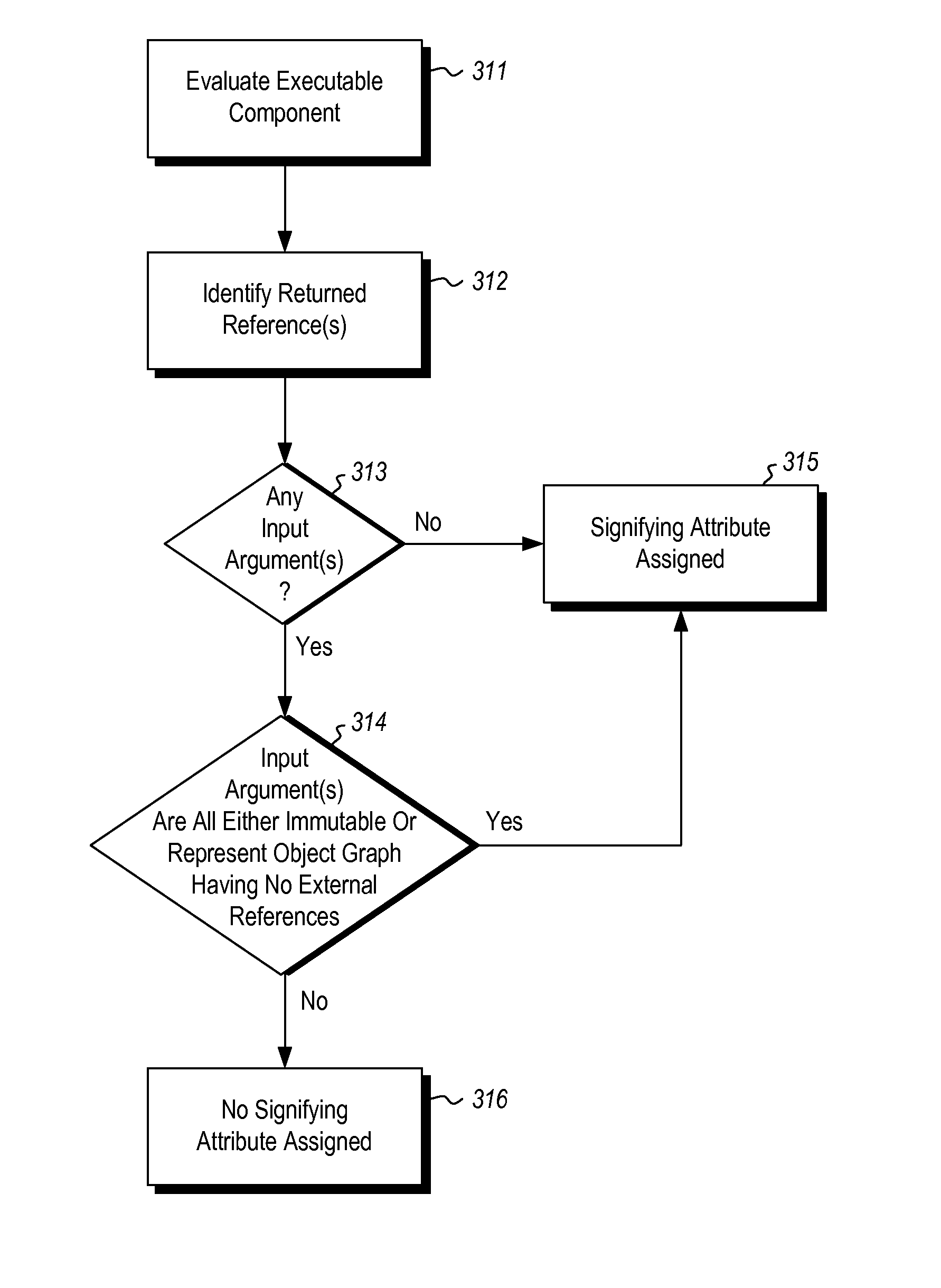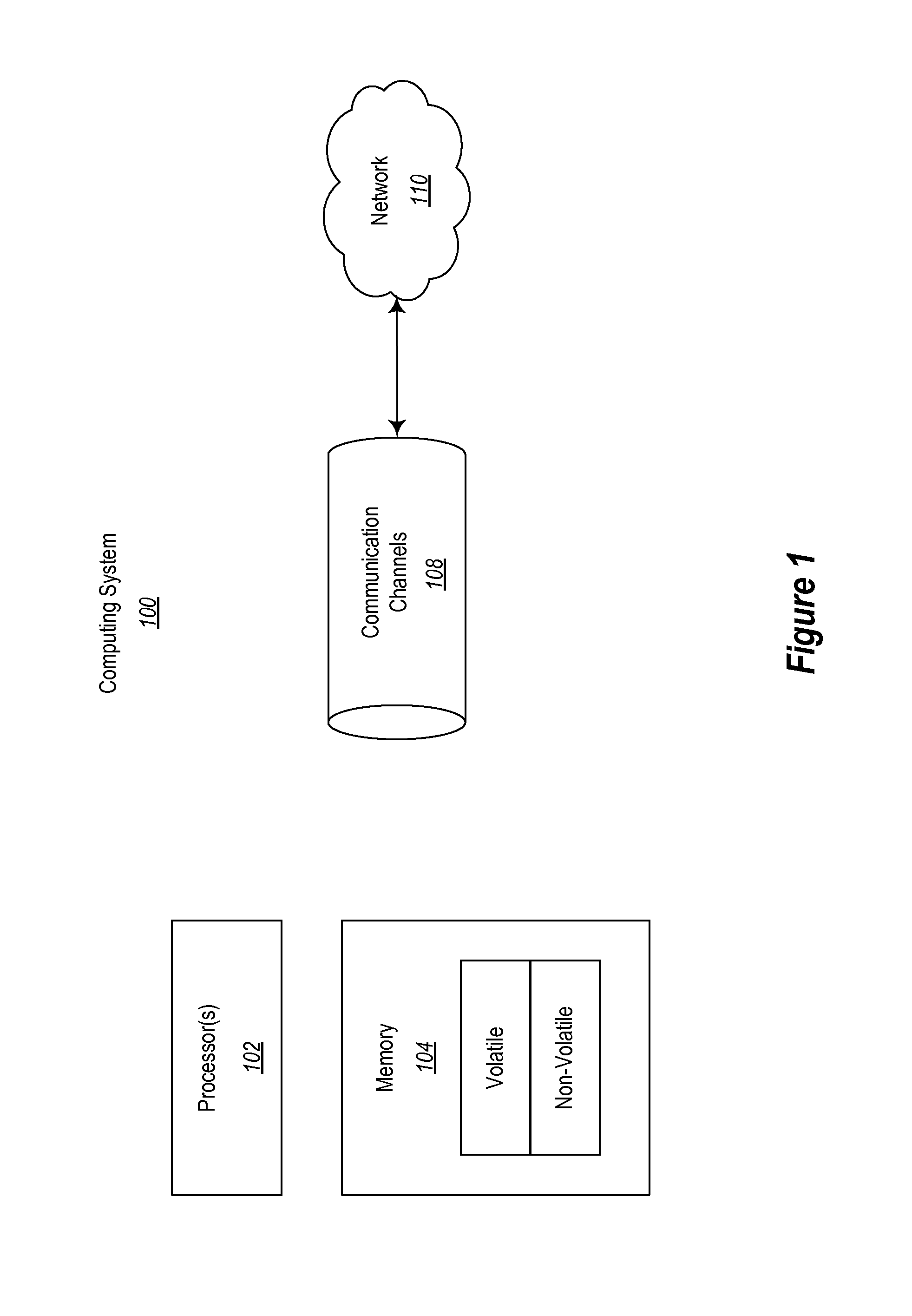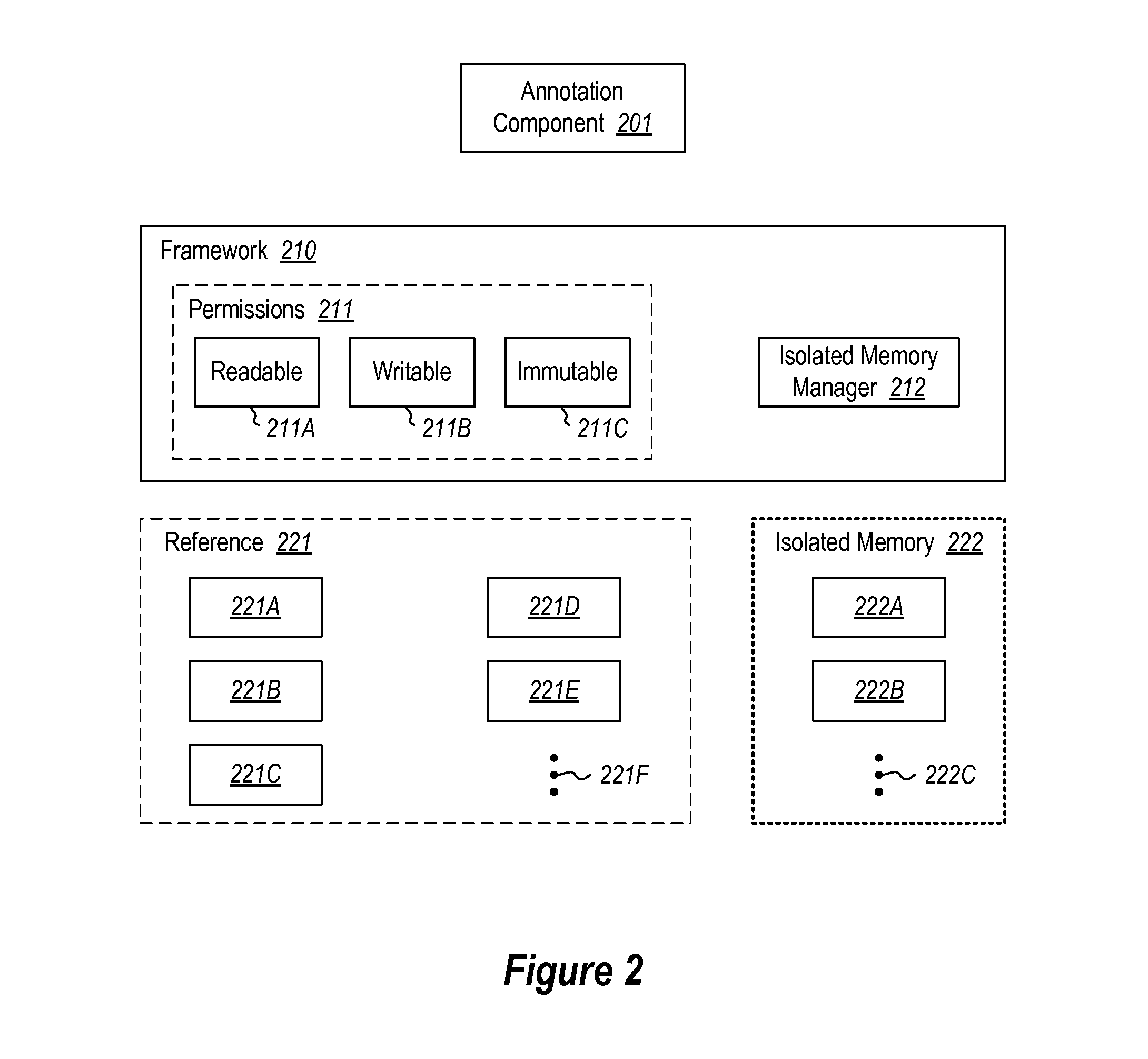Reference attribute annotation signifying no external reference
a reference attribute and annotation technology, applied in the direction of specific access rights, instruments, multi-programming arrangements, etc., can solve problems such as data races, hard to detect, reproduce and solve, and computation systems that perform tasks
- Summary
- Abstract
- Description
- Claims
- Application Information
AI Technical Summary
Benefits of technology
Problems solved by technology
Method used
Image
Examples
Embodiment Construction
[0011]In accordance with embodiments described herein, the annotation of a returned reference from an executable component is described. The returned reference references a particular object graph. If either 1) there are no input arguments to the executable component or 2) each input argument is either immutable or represents an object graph that has no external mutable references pointing into the object graph, and no internal mutable references that reference external objects, a particular attribute is assigned to the returned reference. The particular attribute signifies 1) that there are no external references to the particular object graph (or any object within the particular object graph) referenced by the returned reference, and 2) that there are no mutuable references within the object graph to any objects outside of the object graph. Accordingly, the returned reference is free to have whatever access permissions assigned to it within the scope of the permission assigned to ...
PUM
 Login to View More
Login to View More Abstract
Description
Claims
Application Information
 Login to View More
Login to View More - R&D
- Intellectual Property
- Life Sciences
- Materials
- Tech Scout
- Unparalleled Data Quality
- Higher Quality Content
- 60% Fewer Hallucinations
Browse by: Latest US Patents, China's latest patents, Technical Efficacy Thesaurus, Application Domain, Technology Topic, Popular Technical Reports.
© 2025 PatSnap. All rights reserved.Legal|Privacy policy|Modern Slavery Act Transparency Statement|Sitemap|About US| Contact US: help@patsnap.com



